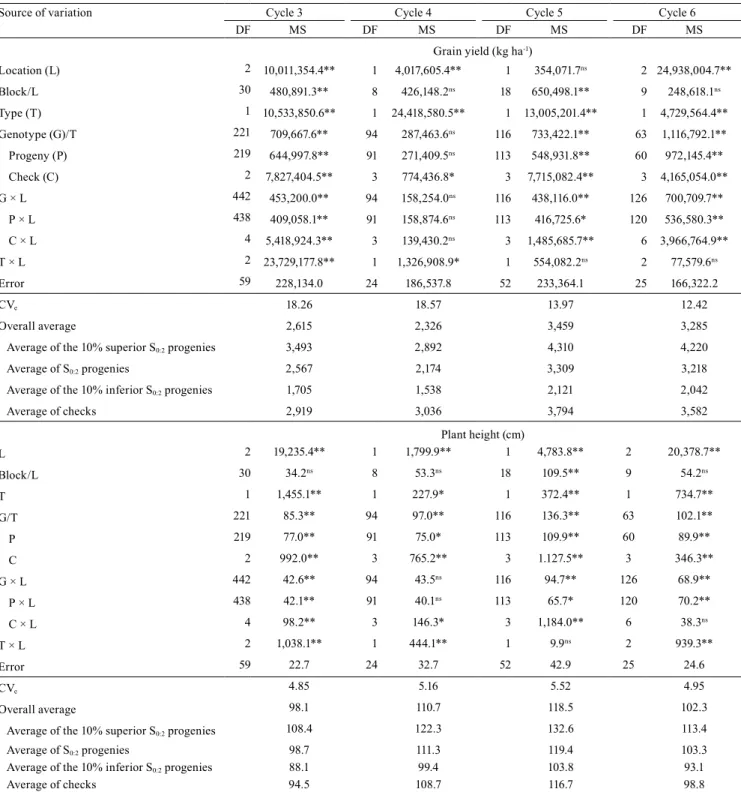Genetic variability during four cycles of recurrent selection in rice
Texto
Imagem


Documentos relacionados
Abstract – The objective of this work was to estimate genetic parameters for bird carcass and meat quality traits, as well as to explore the genetic patterns of the breeding values
O objetivo deste trabalho foi estimar parâmetros genéticos e fenotípicos entre progênies da população CNA6 de arroz de terras altas para os caracteres produtividade
In this context, the purpose of this study was to estimate the genetic gain for grain yield of carioca type in the recurrent selection program for common bean of UFLA after
ABSTRACT - The genetic progress (GP) was evaluated after eight cycles of recurrent selection for resistance to angular leaf spot in common bean and indirect gain for yield and
After two cycles of recurrent selection, genetic progress, in the mean value of the crop seasons, was 7.5% for grain yield, 7% for grain appearance, 33.4% for resistance to rust
It was concluded that there is genetic variability among selected crambe progenies and there was genetic gain for selection based on grain yield, demonstrating the efficiency
ABSTRACT : The objective of this study was to evaluate endozoochory dispersal, recuperation, and germination of weedy rice (Oryza sativa L.) and barnyardgrass (Echinochloa
The aim of this study was to estimate the genetic progress attained for popping expansion (PE) and grain yield (GY) after four cycles of recurrent selection and to compare